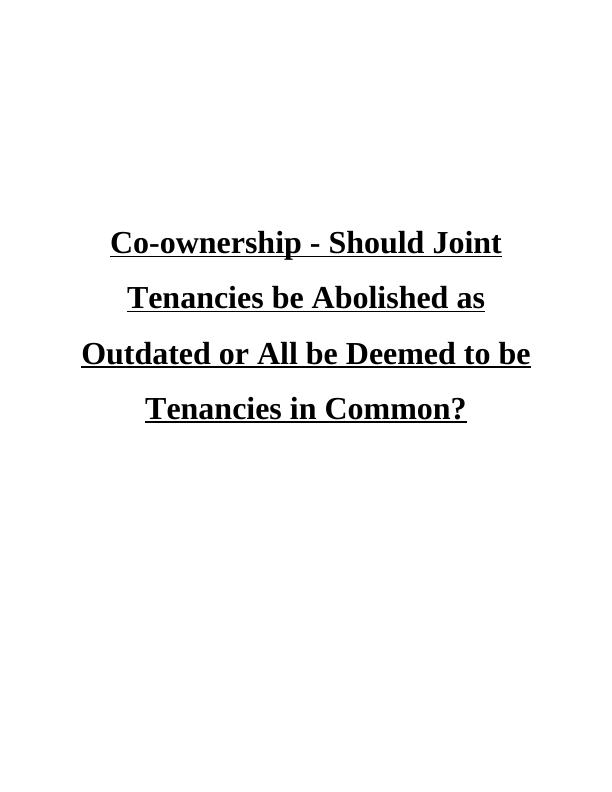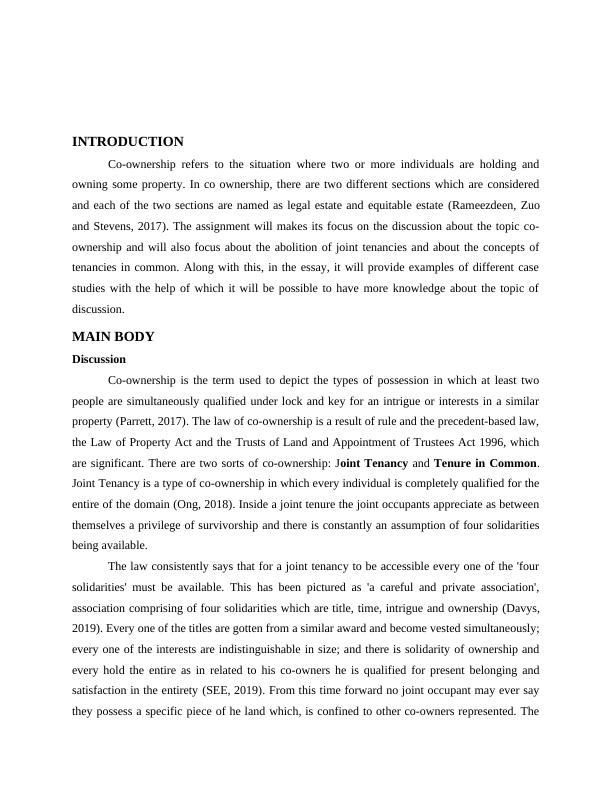Co-ownership - Should Joint Tenancies be Abolished as Outdated or All be Deemed to be Tenancies in Common?
12 Pages4838 Words51 Views
Added on 2023-01-19
About This Document
This assignment discusses the concept of co-ownership and the debate on whether joint tenancies should be abolished or deemed as tenancies in common. It explores the differences between joint tenancy and tenancy in common, and provides examples and case studies to enhance understanding. The assignment also touches upon the property system in Australia and the laws related to co-ownership.
Co-ownership - Should Joint Tenancies be Abolished as Outdated or All be Deemed to be Tenancies in Common?
Added on 2023-01-19
ShareRelated Documents
End of preview
Want to access all the pages? Upload your documents or become a member.
Joint Tenancy and Severance of Joint Tenancy in Singapore: A Comparative Analysis
|7
|3679
|377
Can George be Evicted from the House?
|7
|2352
|223
Report on Land Law Regulations
|13
|4876
|135




